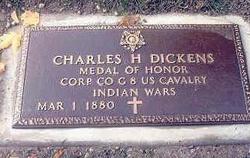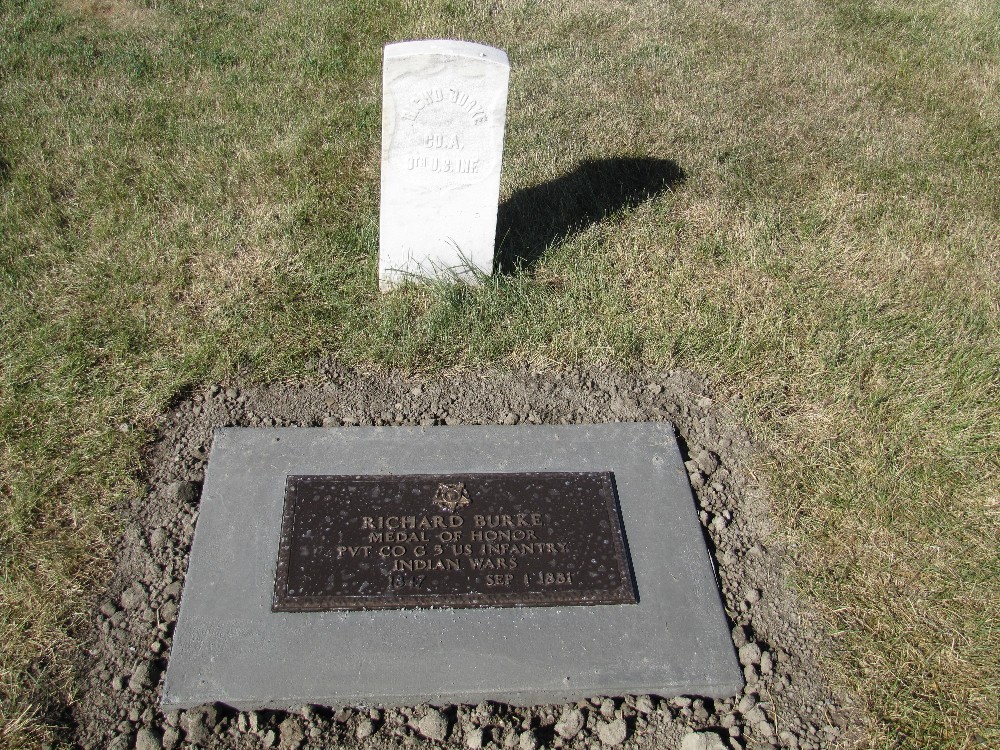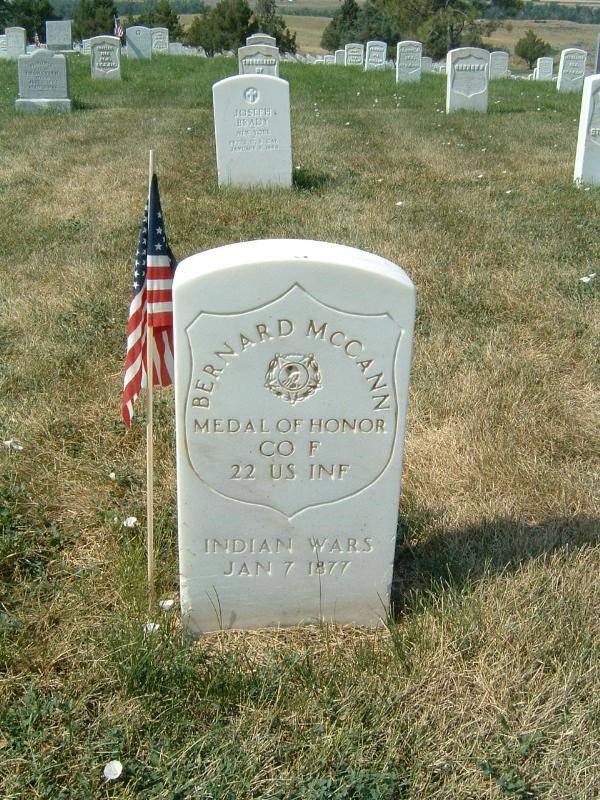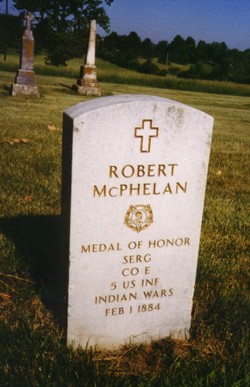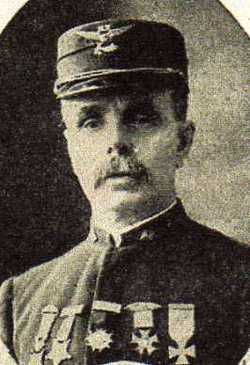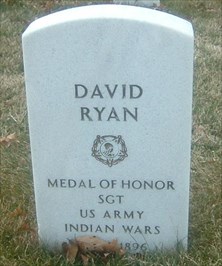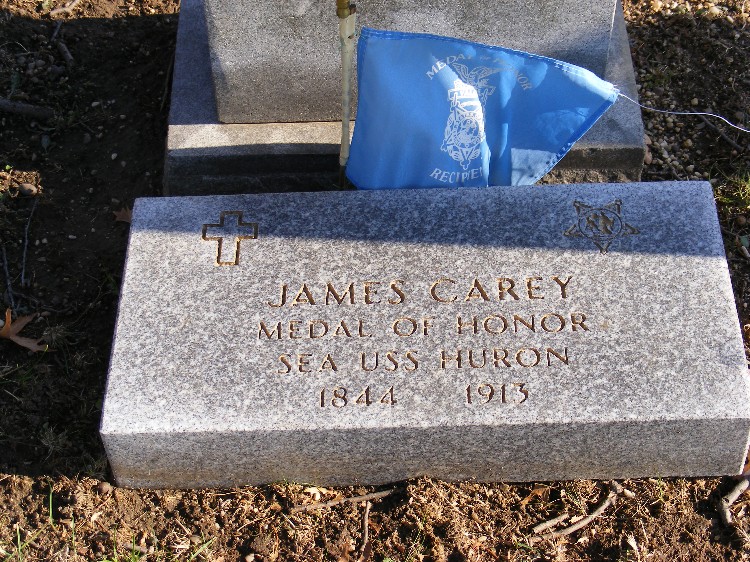|
|
Post by groundhog on Oct 19, 2012 9:06:02 GMT
Cedar Creek, Virginia
19th October 1864 Cedar Creek was the final battle of Sheridan’s Shenandoah Valley Campaign in 1864. At dawn on October 19th, Early’s Confederate Army of the Valley surprised the Federal army at Cedar Creek and routed the VIII and XIX Army Corps. Sheridan was returning from Washington and had stayed the previous night at Winchester. He rode to the sound of the guns, rallied his troops and in the afternoon, launched a counterattack, which recovered the battlefield. Sheridan’s victory at Cedar Creek broke the back of the Confederate army in the Shenandoah Valley. Lincoln was re-elected on the strength of Sheridan’s victories in the Valley and Sherman’s successes in Georgia. Two Irish soldiers earned the Medal of Honor at Cedar Creek. Map Credit; www.civilwar.org/ John Walsh Walsh was a Tipperary-man born on 4th December 1841. He was a Corporal in Company D, 5th New York Cavalry at Cedar Creek. His MOH Citation says that he recaptured the flag of the 15th New Jersey Infantry. Walsh’s medal was issued on 26th October 1864. John Walsh died on 25th May 1924 and is buried in Saint Benedicts Cemetery, Springfield, Massachusetts. Photo Credit; www.findagrave.com/ Thomas Wells Thomas Wells was Chief Bugler of the 6th New York Cavalry at Cedar Creek. He was born in 1841 in Ireland. His birthplace is recorded as Ather which could be Athy. He received the Medal of Honor for the capture of the colours of 44th Georgia Infantry. Wells was subsequently promoted to First Lieutenant. He died in New York on February 5h 1901 and is buried in East DeKalb Cemetery. Photo Credit; www.homeofheroes.com/ |
|
|
|
Post by groundhog on Oct 20, 2012 17:27:26 GMT
Chiricahua Mountains, Arizona
20th October 1869 On October 5th 1869 a small detachment of cavalry, from the 1st and 8th Cavalry Regiments, under the command of Captain Reuben Bernard and Lieutenant William Winters left Fort Bowie, in pursuit of an Apache raiding party. Earlier that day, the Apaches had massacred travellers in a stage coach en route to Tucson and then attacked a group of cowboys in Sulphur Springs Valley. The hunt lasted two weeks before they eventually caught up to the raiders in the Chiricahua Mountains, above Rucker Canyon. The fight was also called the "Campaign of the Rocky Mesa" and it took place on 20th October 1869. Four Irish soldiers were among the Medal of Honor winners on the day. Charles Dickens You might think that Charles Dickens was an assumed name and you’d be right. Dickens real name was John Coleman. He was born in Dublin on an unknown date. His MOH citation is for gallantry in action and he was issued his medal on 14th February 1870. Dickens died on 1st March 1880 and is buried in St. John’s Cemetery, Worcester, Massachusetts. Charles Kelley Charles Kelley was born in Clare in 1840. He joined the Army in New York. On 20th October 1869 he was a Private in Company G, 1st Cavalry Regt. He was issued his medal on 14th February 1870 and the citation was for Gallantry in action. Kelley’s date and place of death are not known. Edward Murphy Murphy was born in Co. Cork in 1845. At Chiricahua Mountain he was a Private in Company G, 1st Cavalry Regt. His issue date for his medal is not recorded, it’s a fair assumption they were all issued together and his citation was also for Gallantry in action. Murphy died in Los Angeles on 27th January 1924 and he is buried in Los Angeles National Cemetery. John Tracy John Tracy was born in Dublin on December 28th 1848. His was also an assumed name, he was born Henry Nabers. At Chiricahua Mountain he was a Private in Company G, 8th Cavalry Regt. He too was issued his medal on 14th February 1870 and the citation was for bravery in action with Indians. Tracy died in St. Louis, Missouri on 29th May 1918. He is buried in Calvary Cemetery in the city. |
|
|
|
Post by groundhog on Oct 20, 2012 23:08:54 GMT
Cedar Creek, Montana,
21st October 1876 In the aftermath of the Battle of the Little Bighorn the US Army sent reinforcements to Montana. One of these units was the 5th Infantry Regiment who we have met before in engagements where Irish soldiers have won the MOH. Col Nelson Miles led the 5th from Kansas to Montana where he came under command of General Terry. Tery’s men moved to Glendive on the Yellowstone River where he established winter quarters. Miles troops set up a temporary base at the mouth of the Tongue River. Supply trains attempting to reach Terry’s men were ambushed by Sioux warriors several times in October. After a few engagements Indian messengers contacted the commander of one wagon train suggesting a meeting between Miles and Sitting Bull at Cedar Creek. The two men met on October 20th. Miles demanded the surrender of all the Sioux while Sitting Bull wanted to trade for ammunition so he could hunt buffalo. The two agreed to meet again the following day. On the 21st Miles again demanded an Indian surrender while Sitting Bull demanded a halt to white encroachment on Sioux territory. The talks broke down and a gunfight erupted in which 2 soldiers and 5 Indians were killed. The Sioux withdrew and were chased for about eight miles by the army. Crucially the Indians abandoned food, horses and their shelters. With no means of surviving the winter some 2,000 surrendered on October 27th. Sitting Bull and his more ardent warriors were not among them. They were headed for Canada and the army engaged in a winter campaign in pursuit of the renegades. The Medal of Honor Citations for the men below are somewhat confusing as they cover the dates from 21st October 1876 to 8th January 1877. On the latter date the 5th Infantry defeated a band of Sioux and Cheyenne at Wolf Mountain, Montana. All the medals mentioned below appear to have been awarded for Cedar Creek except those of Byrne, Burke and Donelly. There were also separate MOH awards for Wolf Mountain. In total there were 31 MOH awards for the period mentioned so the Irish-born soldiers are well represented with eleven awards. In addition there are several US-born soldiers with Irish names. Of the Irish Medal of Honor winners listed below, Henry Hogan, the only double MOH winner of the Indian Wars earned his first at Cedar Creek. Of interest to Tipperary readers will be Capt Edmond Butler, a Clonmel man, who commanded Company C at Cedar Creek. We’ll be meeting him again at Wolf Mountain. Denis Byrne Denis Byrne (also called Denny Burns) was born in Wexford in 1833. He was a Sergeant in Company G, 5th Infantry. His MOH was issued on 27th April 1877 for Gallantry in engagements. Denis died in Bird Island, Minnesota on 31st December 1905. Richard Burke Richard Burke was born in Tipperary in 1847. He was a Private in Company G, 5th Infantry Regt at Cedar Creek. His Citation reads for Gallantry in engagements. He died on 1st September 1881 and is buried in the Custer National Cemetery, Montana. John Donelly John Donelly was born in Kerry in 1850. At Cedar Creek he was a Private in Company G, 5th Infantry. His Citation reads for Gallantry in action. Donelly’s date of death and resting place are unknown. Henry Hogan We’ve already met Henry who was a double MOH winner stmhs.proboards.com/index.cgi?action=display&board=general&thread=26&page=2#713Philip Kennedy Philip Kennedy was born in Co. Galway in 1841. During the Sioux uprising of 1876 Kennedy was a Private in Company C, 5th Infantry Regiment. His medal was issued on 27th April 1877 for Gallantry in action. He died on 3rd November 1883 and is buried in Cincinatti, Ohio. Bernard McCann Born 1850 in Co. Roscommon. He was a Private in Company F, 22nd Infantry Regiment, joining the army in New York. His Medal of Honor was a Posthumous award issued on 27th April 1877. McCann died of wounds on January 12th 1877. He had been wounded in the leg at Wolf Mountain four days previously. Michael McLoughlin Michael McLoughlin was born in Co. Sligo on January 4th 1840. He was a Sergeant, in Company A, 5th U.S. Infantry during the Sioux uprising of 1876. His medal was issued on 27th April 1877 for Gallantry in action. He died on 8th June 1921 and is buried in Tacoma, Washington. Robert McPhelan Robert McPhelan was a Laois man born in 1837. He was a Sergeant in Company E, 5th Infantry Regt. He was wounded at Cedar Creek on October 21st. McPhelan died on 1st February 1884 and is buried in Leavenworth, Kansas. David Roche David Roche was a First Sergeant in Company A, 5th Infantry at Cedar Creek. He was born on 1st May 1838 in Kerry and died on 19th November 1914. He is buried in Hope Cemetery, Worcester, Massachusetts. David Ryan David Ryan was born in Kilkenny in 1836. He was a Private in Company G, 5th Infantry. He died on 8th September 1896 and is buried in Jefferson Barracks Cemetery, St. Louis, Missouri. William Wallace [/img][/center] William Wallace was born in Donegal on 31st October 1847. He served as a Sergeant in Company C, 5th Infantry. He died on the 9th January 1928 and is buried in Walnut, Kansas. |
|
|
|
Post by groundhog on Oct 25, 2012 23:15:19 GMT
John Flannagan
Le Havre, France,
26th October 1878  USS Supply John Flannagan was born in Ireland in 1852. He joined the Navy in New York. By 1878 he was a Boatswain's Mate on the USS Supply . He rescued a shipmate, David Walsh, from drowning off Le Havre, France and was awarded a MOH. Flannagan’s date and place of death are not recorded. As a matter of interest the USS Supply was used to transport camels from Egypt to the US in 1856 for use in an experimental US Army Camel Corps.
|
|
|
|
Post by groundhog on Oct 27, 2012 11:18:30 GMT
John Nolan
Georgia Landing, Louisiana,
27th October 1862 The Battle of Georgia Landing resulted from a raid launched by Union forces under Brig-Gen Godfrey Weitzel into the Bayou Lafourche region of Louisiana. The objective was to eliminate the Rebel threat from that area, to make sure that sugar and cotton products from there would come into Union hands and, in the future, to use it as a base for other military operations. Weitzel had a brigade of about 4,000 men that arrived at Donaldsonville, where the Lafourche river meets the Mississippi, on October 25th. The Federals advanced up the east bank of the bayou while the Confederates under the command of Brig-Gen Alfred Mouton attempted to concentrate to meet the threat. By the 27th, the Confederates had occupied a position on the bayou near Labadieville. Mouton’s force was deployed half on the east bank of the Bayou while the rest of the men were on the west bank near Georgia Landing. The Federal troops marching down the east bank encountered the Rebels at about 11 am and began skirmishing. The Confederates fell back quickly. Weitzel then began crossing his men to the west bank to attack the Rebel troops there. For some time, these Confederate troops fought resolutely and brought the Union assault to a standstill. The Rebels, however, ran out of artillery ammunition and had to withdraw to Labadieville leaving the field to the Union troops. John Nolan was a Sergeant in Company K, 8th New Hampshire Infantry. At Georgia Landing, he was carrying the colours of his regiment when he was felled by a cannon shot. Despite this he continued to carry the colours at the head of the regiment throughout the battle. Nolan was born in Thurles, Co. Tipperary on 24th June 1842 and joined the army at Nashua, New Hampshire. He died in New York on June 13th 1912 and is buried in St Raymond’s Cemetery, in the Bronx.
|
|
|
|
Post by groundhog on Oct 31, 2012 15:44:37 GMT
Plymouth, North Carolina,
31st October 1864 In 1862, Union forces had captured Plymouth , North Carolina and several other points along the North Carolina coast. This deprived the Confederacy of several ports for necessary for importing supplies and exporting produce. In the spring of 1864, the Confederates mounted a campaign to recapture the ports. General George Pickett led a division to the area and launched a failed attack on New Bern in February. General Robert Hoke assumed command and moved against Plymouth, fifty miles north of New Bern. He planned a combined Army/Naval attack using the CSS Albemarle, an ironclad that was still being built on the Roanoke River inland from Plymouth. Hoke attacked the 2,800-man Union garrison at Plymouth with 7,000 men on April 17th. He quickly captured some of the outer defences but was unable to move into the city itself because the Albemarle was still moving downriver. In fact it was still being built as it sailed and due to some mechanical failures did not reach Plymouth until the 19th. As soon as it arrived, the Rebel ship sank one of the Union’s supporting ships and drove the other off. Without their ships providing fire support, and under bombardment from the the Albemarle, the Union troops surrendered Plymouth on April 20th. Fast forward to October 1864 and the Union launched a naval raid led by Lt William Cushing to sink the Albermarle on 27th. Cushing sank the Confederate ship with a spar torpedo and made his way back to Union lines. A major attack by Union Naval forces was then launched beginning on the 29th on the port of Plymouth. The garrison surrendered on the 31st October. Two Irish-born sailors won Medals of Honor at Plymouth out of a total five awards. Patrick Colbert Patrick Colbert was born in Ireland in 1840. At Plymouth, he wa a Coxswain on the USS Commodore Hull. Colbert, in command of the ship’s forward pivot gun was wounded by a shell which killed the man at his side. He remained at his post until the end of the action, braving heavy enemy fire. Colbert died in Detroit, Michigan on 19th January 1877. www.homeofheroes.com/ Martin Howard [/img][/center] Martin Howard was an assumed name. Howard’s real name was Michael Horgan and he was born in Ireland on 17th September 1846. He was a Landsman on board the USS Tacony at Plymouth . He was part of a landing party that captured and spiked a 9-inch gun while under a devastating fire from enemy musketry. He died on 27th November 1910 in Malden, Massachusetts. Photo Credit; militarytimes.com/Another possible Irish connection is in the Wikipedia claim that Cushing was a distant cousin of Erskine Childers. October has been a fruitful month for Irish MOH winners with 24 in all. The winter months will see a fall off in medal winners because of the winter hiatus in military activity. It will be mid-November before we see our next MOH winner and early February before we reach a figure of 24 again.
|
|
|
|
Post by groundhog on Nov 14, 2012 0:14:42 GMT
Thomas Cavanaugh
USS Potomac, West Indies
14th November 1898  USS Potomac in 1898 Thomas Cavanaugh was born in Ireland on May 10th 1869. On 14th November 1898 he was a Fireman First Class aboard the USS Potomac sailing from Cat Island to Nassau. During the voyage something happened to the ship’s boiler threatening the ship. Cavanaugh voluntarily entered the fireroom which was filled with steam and succeeded in opening an auxiliary valve, saving the ship. His Medal of Honor was issued in December that year. Cavanaugh’s date of death and burial location are unknown.
|
|
|
|
Post by groundhog on Nov 16, 2012 0:20:37 GMT
William Williams
USS Lehigh, Charleston Harbor
16th November 1863 In August 1863 the USS Lehigh joined the South Atlantic Blockade Squadron off Charleston. Over the enxt few months she engaged the harbour’s forts almost daily. While attacking Fort Sumter on 16th November 1863 the USS Lehigh ran aground. While attempting to float the ship William Williams, a Landsman on the ship, along with several other men passed in a small boat from the Lehigh to the Nahant with a line bent on a hawser under heavy enemy fire from Fort Moultrie. The ship was subsequently freed and Williams awarded a Medal of Honor on 16th April 1864. Williams was born in Ireland in 1840 His date of death and burial place are unknown. |
|
|
|
Post by groundhog on Nov 16, 2012 0:21:30 GMT
[/img] The USS Constitution in Boston Navy Yard today. The obelisk in the background is the Bunker Hill Memorial[/center] James Thayer was born in Ireland in 1853. Like Williams he joined the Navy in Pennsylvania. He served as a Ship's Corporal on the USS Constitution. On the 16th November 1879 in Norfolk Navy Yard Virginia he rescued from drowning a boy serving with him on the ship. His medal was issued on 18th October 1884. Thayer’s date and place of death are also unknown. |
|
|
|
Post by groundhog on Nov 24, 2012 0:18:19 GMT
James Carey
USS Huron
24th November 1877 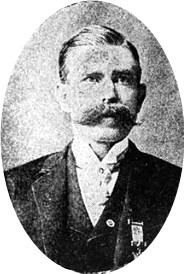 Born in 1844 in Ireland, James Carey served as a Seaman on board the USS Huron. Huron left Hampton Roads on November 23rd 1877 for a scientific cruise in the Carribbean. She soon ran aground in a storm off Nag’s Head, North Carolina and heeled over and sank at 1 am on 24th November. 98 of the crew died in the disaster and 34 were saved. James Carey saved 3 shipmates from drowning and was awarded a Medal of Honor. Carey died in New York in 1913 and is buried in Holy Cross Cemetery, Brooklyn. Photos; www.findagrave.com/freepages.history.rootsweb.ancestry.com/~familyinformation/transcripts/huron.html
|
|
|
|
Post by groundhog on Dec 2, 2012 1:33:24 GMT
Denis Ryan
Gageby Creek, Indian Territory
2nd December 1874 We’re back in the Red River War in North Texas. Denis Ryan was a First Sergeant in Company I, 6th U.S. Cavalry. His Courage while in command of a detachment at Gageby Creek, Indian Territory on 2nd December 1874 earned him a Medal of Honor. Denis was born in Cork in 1848. His date of death and burial place are unknown.
|
|
|
|
Post by groundhog on Dec 8, 2012 2:02:20 GMT
John O'Sullivan
Staked Plains, Texas
8th December 1874  John O’Sullivan earned his Medal of Honor with Company I, 4th Cavalry on the Staked Plains of West Texas on 8th December 1874. He was a member of a patrol pursuing a band of Indians through the Muchague Valley. All but one of the Indians was killed in a firefight and O’Sullivan and another man attempted to capture the survivor during a long pursuit. John O’Sullivan was born in Kerry in 1850. He joined the army in New York on March 22nd 1870. After military service he lived in New York where he died on 19th May 1907. He is buried in Calvary Cemetery, Queens, New York. |
|
|
|
Post by groundhog on Dec 11, 2012 9:42:50 GMT
Thomas Plunkett
Fredericksburg, Virginia
11th December 1862  Thomas Plunkett was born in Ireland in 1841. During the American Civil War he fought in Company E, 21st Massachusetts Infantry with the rank of Sergeant. On 11th December 1861 he was a colour bearer in his regiment at the Battle of Fredericksburg, Virginia. During the battle he was wounded in both arms by cannon fire but clutched the colours to his chest and continued to advance. Both arms were subsequently amputated. It took Plunkett two years to recover and he worked as a mesenger in Massachusetts State House for 15 years. He married and had two children. Thomas Plunkett died on 10th March 1885 at the age of 44, in Worcester, Massachusetts. He is buried in Hope Cemetery. The flag that he carried at Fredericksburg is preserved in the State House. |
|
|
|
Post by groundhog on Dec 13, 2012 13:29:56 GMT
Charles Collis
Fredericksburg, Virginia
13th December 1862  Collis was born in Cork on 4th February 1838. He immigrated to the US in 1853 and studied law. At the start of the Civil war he enlisted in the 18th Pennsylvania Infantry, was commissioned a Captain and promoted Colonel in 1862 to command the 114th Pennsylvania Infantry. He earned the Medal of Honor for courage in leading his regiment at Fredricksburg on 13th December 1862 although the medal wasn’t issued until 10th March 1893. Collis was wounded at Chancellorsville in 1863 but recovered to be promoted to General rank and lead a brigade in the latter stages of the war. After the war Collis returned to the practice of law. He died in Pennsylvania on May 11th 1902 and is buried in Gettysburg National Cemetery. Photo Credit; www.picturehistory.com |
|
|
|
Post by groundhog on Dec 14, 2012 0:04:09 GMT
James Brogan
San Simon Valley, Arizona
14th December 1877  James Brogan was a Sergeant in Company G, 6th Cavalry in Arizona when he won the Medal of Honor 14th December 1877. The action for which he was awarded the medal took place in the San Simon Valley in the south east of the state. His Citation reads that he engaged singlehanded 2 renegade Indians until his horse was shot under him and then pursued them so long as he was able. The medal was issued on 9th January 1880. James Brogan was from Donegal and he was born in 1834. He joined the army in 1864, serving in the 21st Pennsylvania Cavalry in the Civil War. He died on 30th October 1908 and is buried in Summit Hill, Pennsylvania under the name Edward James Brogan.
|
|





